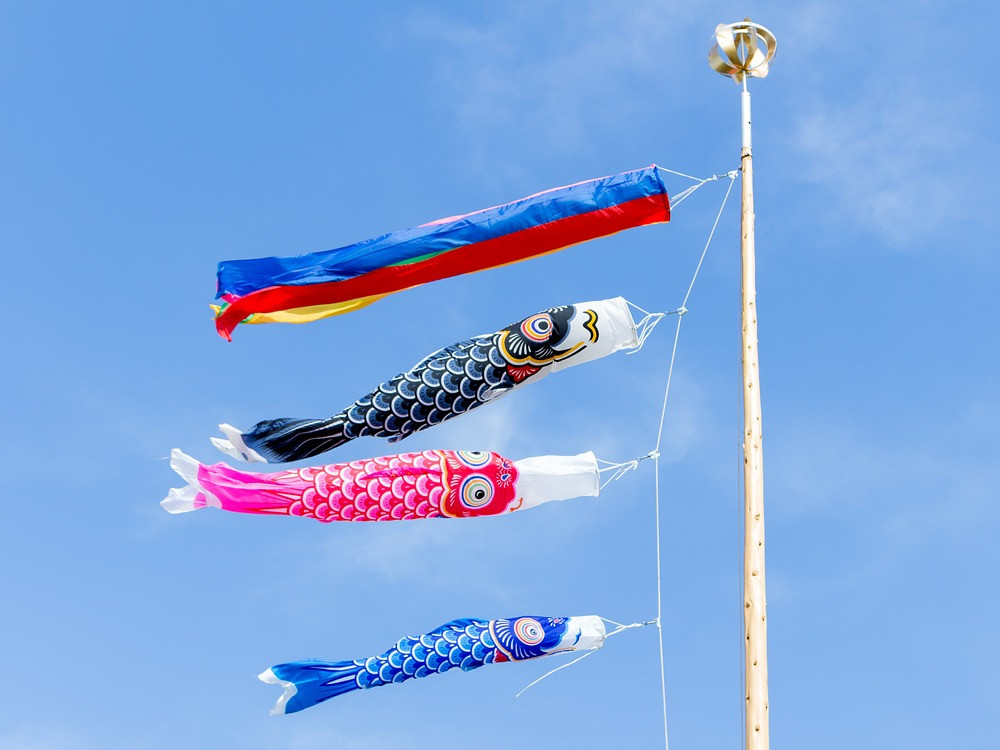Kodomo no hi or Japanese Children’s Day is a festival originally for boys (“tango no sekku”) but which has been renamed for both sexes and is held on the 5th day of the 5th month.
On this day families with newborn sons fly koinobori, beautiful multi-colored carp windsocks outside of homes to wish their sons a good future. Otoko means “boy” and sekku means “festival”. The festival originated in China and later became associated with May rice planting in Japan.
Celebrating
May was traditionally the time when insects begin to appear and harm the rice plants. Farmers would frighten away the insects with bright banners and grotesque figures. The colorful banners eventually took the form of koi or carp, the boldest and noblest of fish. Swimming upstream against strong currents to reach their spawning grounds, the carp has become the symbol of courage, virility and strength. Since parents hope their sons grow up in the same way to be brave and strong and attain success by overcoming life’s obstacles, families traditionally flew koinobori from their homes to honor their sons.
A set of streamers usually has three or more fish. The large black one (magoi) represents father. According to a Japanese children’s song, the red one (higoi) represents the first born son. However, in modern Japan, many prefer to see it as mother. The small ones (usually green and blue) represent the sons in the family. A new streamer is added each time a new baby is born.
A fun way to celebrate Boys’ Day is to make mochi. In addition to hanging koinobori kites, families also typically display warrior dolls famed for their fighting power. These warriors were meant to teach young boys manliness as well as keep them away from evil. Tiered shelves are used in homes to display Boys’ Day figures of ancient war heroes and warriors, miniature armor boxes, helmets, swords and banners similar to those used in the ancient fields of battle.








